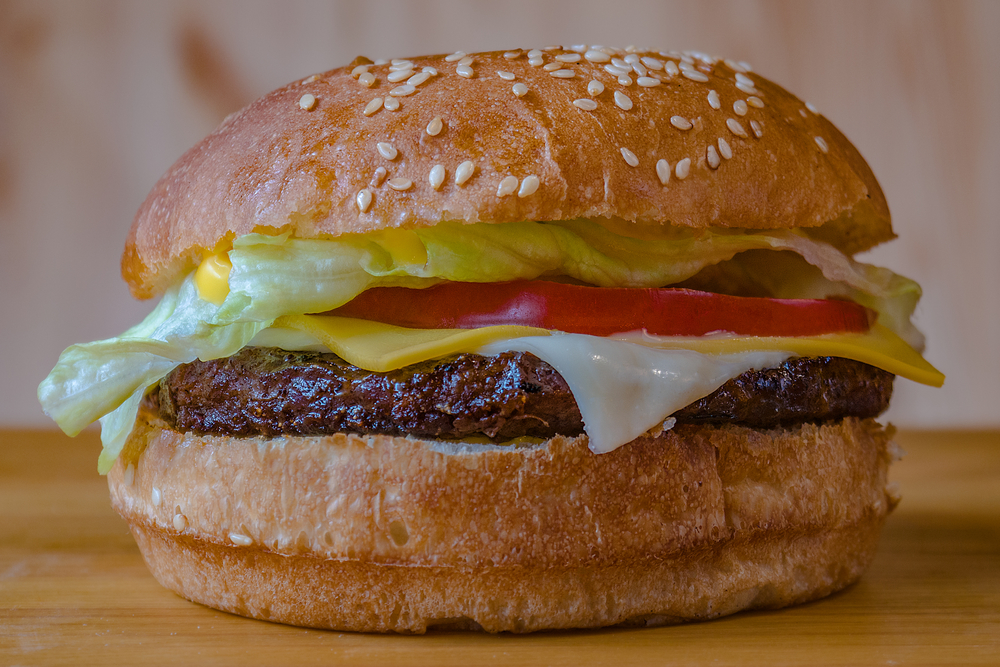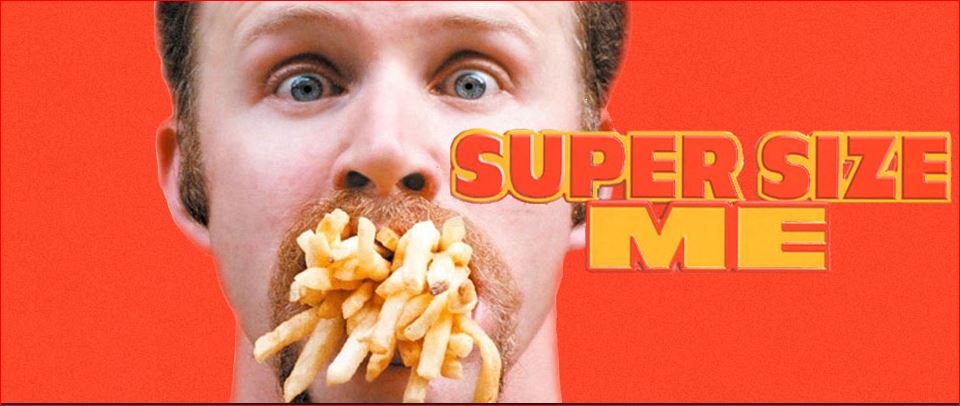- Home
- Blog
- Healthy Weight Loss
- How big are your portions?
How big are your portions?
Written by Catherine Saxelby
on Friday, 25 January 2013.
Tagged: guides, healthy cooking, healthy eating, healthy lifestyle, obesity, overweight, portion size, tips, weight loss

This shows you how everyday foods have gradually been upsized over the past ten years and why this is such a problem. I firmly believe that big portion sizes are a real contributor to passive weight gain and the obesity crisis. Here you can make up your own mind (I think you'll agree).
We live in an “obesogenic” world
Nutritionists come to realise that - in modern Western countries - we live in what we call an “obesogenic” world - full of fast food outlets, food courts, vending machines, snack food and meal deals. It’s a world that’s designed to create obesity thanks to junk food that is cheap, kilojoule or calorie dense, widely available and sold in large portions. The obesogenic world overrides our best efforts at maintaining a healthy weight.
Compare the size of the portions now and then
Let’s compare the portion size of 4 everyday foods and you’ll see what I mean:
- 1. Chocolate. In the 1970’s when you shared a “family” block of chocolate, that was one weighed 150 g. Now, what’s sold as “family block” weighs 250 g.
- 2. Even the humble cup of tea is served in bigger cups. In the 1960’s, tea was served in dainty china cups. Now we drink our tea in large mugs that hold 50% more.
- 3. We used to enjoy cup cakes. Now huge muffins are the go - a cupcake weighing 90 g was once enough of a sweet treat. Now that’s morphed into a 200 g muffin.
- 4. Alcoholic drinks show the greatest rise in size over the past 30 years. I still have the set of wine glasses my father liked to drink from. His wine glasses held a tiny 100 mL, equivalent to the standard serve of wine. Now I’m often served wine in these huge balloons that can hold 200 mLs. I’ve even seen one bottle of 750 mL fill three 250 mL glasses!
The movie “Supersize Me” changed the way we view fast food and it’s up-sizing techniques
Any of you who saw the movie “Supersize Me” will remember how it highlighted the worst of fast food and it’s deliberate ploys to upsize your order.
Its director Morgan Spurlock lives on Maccas for 30 days and does his best to eat everything they supersize him to.
Fast food outlets are masters at upsizing you for a few cents more!
Fast food outlets are masters at upsizing you for little extra. I bet you’ve already encountered these examples:
- Have you bought a meal deal where you get a better price for two burgers? Or fries plus a drink plus a burger?
- Have you seen the occasional huge size they run as a promotion? E.g. a whopper, a stack, triple or quad? These appeal to hungry teen boys.
- Have you been asked if you wanted to upsize your fries from regular to jumbo for a few more cents?
They give you food for free! It’s a bargain we can’t resist!
Food companies and supermarkets are good at giving you more food for free. I bet you've often seen: "Get two for the price of one", "Get 250 mL extra free", "1.2 for the price of 1 kg". It’s a bargain we can’t resist.
Expanding portion sizes
Research has tracked these expanding portion sizes. It shows how 10 foods grew in size in the US between 1991 and 1996. What catches my eye is that it’s beverages that have increased the most. Particularly beer, soft drink and fruit drink.
Serve sizes have increased since when first introduced
Researchers in the US have also shown that serve sizes have increased dramatically since the time when they were first introduced. Look at well-known brands with the year the product was first introduced, it’s original size, and the sizes available now. McDonald’s fries is a typical example. In 1955, McDonald’s first introduced it’s iconic paper bag of fries which weighed 70 g. Now this is the smallest of four sizes, which go up to 120 g for a medium size bag, 170 g for a large cup, and 207 g for a king-sized cup! The same applies to McDonald’s burgers, Budweiser beer and Hershey's bars.
Movie popcorn – the bigger the box, the more you eat!
Movie popcorn is a real trap. The bigger the box you buy, the more you tend to eat. And that has been shown in experiments. I surveyed the popcorn at a large cinema movie chain. Here you can compare the three sizes they sell, the maxi, the mega, and the super-mega for their weight, fat, kilojoules and cost. If we compare the super-mega to the maxi, you’ll see that for $2 more you get double the weight, double the fat and kilojoules.
The movie popcorn experiment
In a well-known movie popcorn experiment, two groups of students were offered a box of popcorn – one was a normal maxi size. The other was the super-mega at double the size. What this showed is that people eat approximately 50% more from the big bucket than from the small bucket.
The bottom line is, the bigger the size of food presented to you, the more you eat.
Watch a movie with M&Ms… but not the big bag!
The experiment was then repeated by asking to watch a movie with a bag of M&Ms. Half the students were given a medium bag which contained 100 M&Ms. The other half got a large bag which contained 206 M&Ms.
Pack size increases consumption
The size of the pack increases how much you consume. The students thought they were being asked to watch a movie, they didn’t realise they were being secretly observed for how much they consumed. The graph shows that the students with the small bag of 100 ate 63 M&Ms. The students with the large pack ate almost double – 112 M&Ms. They both had the same feelings of hunger and fullness at the start of the experiment. His excellent book, Mindless Eating, reviews all these experiments and shows clearly we tend to eat the portion served infront of us.

Big plate, looks less!
The fashion to large dinner plates only encourages larger portions. Line up two plates. Ask yourself, “Which steak looks bigger?” The one on the big plate? Or the one on the smaller plate?
Of course, both steaks are the same size. The one on the big plate appears smaller, so you think you are eating less.
The solution – eat small
The solution is to try and eat small. For instance, serve up small portions - which we’d call normal in a world of big plates and big portions.
- Eat with a normal size spoon – you’ll eat less than if you use an oversize spoon.
- Go for quality rather than quantity – less means more.
- Avoid anything sold as super, whopper, maxi, or mega.
More solutions
- Eat half now, save half for later.
- Share something with a friend – especially juices and fast food items
- When you are eating out, ask for a doggy bag.
- At buffets don’t go back for seconds.
- Listen to your stomach, stop eating when you are full.
The bottom line
Remember, WASTE has two meanings – if it doesn’t go to food waste it will end up around your waist.
Foodwatch
The Good Stuff
The Boring Stuff
© 2025 Foodwatch Australia. All rights reserved
Website by Joomstore eCommerce






